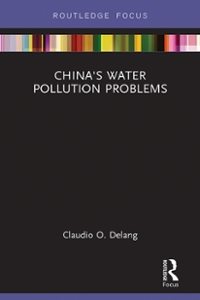Question
1. This questions is based on the article, Deutsche Bank Issues Stark US Inflation Warning, Seeing Economic Parallels to 1940s, 1970, published on the website
1. This questions is based on the article, "Deutsche Bank Issues Stark US Inflation Warning, Seeing Economic Parallels to 1940s, 1970," published on the website of coindesk.com on June 7, 2021. The article summarizes the messages of a report by Deutsche Bank on the potential trends in the U.S. economy and the possible policy responses to them in the next couple of years.
(a)The article suggests that the output gap of the U.S. economy at the end of 2020 stood at about -3% (see the chart in the article) but may rise to 2% (or more) in 2021/2022 (see the grey line in the chart which corresponds to the Deutsche Bank projected baseline[1]). According to the article, what factors may contribute to this dramatic change and thus contribute to inflationary pressures by increasing aggregate demand? Note: Consider factors that impacted consumption (C) and investment (I) and make sure to explain the mechanism of their work. [8]
Answer:
(b)From the material presented in the article, is the Fed following an optimal Taylor rule or deviating from such a rule? What are the risks of deviating from the rule? Please justify your conclusions; and make sure to explain what Taylor Rule is in your response. [10]
Answer:
(c)According to the article, how do U.S. macroeconomic policies under the COVID-19 pandemic compare with the policies adopted in response to the 2008 financial crisis? Note that there was no inflation in the aftermath of the financial crisis. Does the article portray the policy response to the 2008 financial crisis as optimal or sub-optimal? [6]
Answer:
2. This questions is based on the article, "Ecuador is in intensive care, and a straitjacket," published by The Economist on July 4, 2020. The article discusses the dilemmas and constraints of macroeconomic policies in Ecuador, where the US dollar has been adopted as legal tender since 2000 as a means of doing away with inflation, which was rampant when Ecuador had its own currency.
(a)The article points out that in 2020 Ecuador's economy was badly suffering from the COVID-19 pandemic, but unlike the situation in many other countries, the government and the central bank could not use expansionary macroeconomic policies to reduce the economic hardship caused by the pandemic. What were the sources of the constraints on expansionary macroeconomic policy? What role did the dollarization of the economy played in those constraints? Please explain your answer. [8]
Answer:
(b)According to the article, Ecuador enjoyed a natural resource boom during the government of Rafael Correa. Did the government of Ecuador follow an optimal fiscal policy at that time? What evidence in the article points to optimality or suboptimality of fiscal policy under the Correa administration? Please explain your answer. [8]
Answer:
(c)According to the article, why did Ecuador adopt the US dollar as its legal currency in 2000? What have been the benefits and costs of that adoption? Please, explain your answer. [10]
Answer:
(d)According to the article, did Ecuador attempt to reform its macroeconomic policies before the 2020 pandemic? If so, what were those reforms, what were their aims, and how did the government handle the process? What constraints did Ecuador's policymakers faced in reforming the country's macroeconomic policies at that time? Please, explain your answer. [10]
Answer:
[1] You may also access the full Deutsche Bank report on this issue through this link: https://www.db.com/news/detail/20210607-deutsche-bank-research-warns-of-the-impending-threat-of-rising-inflation?language_id=1
Step by Step Solution
There are 3 Steps involved in it
Step: 1

Get Instant Access to Expert-Tailored Solutions
See step-by-step solutions with expert insights and AI powered tools for academic success
Step: 2

Step: 3

Ace Your Homework with AI
Get the answers you need in no time with our AI-driven, step-by-step assistance
Get Started


